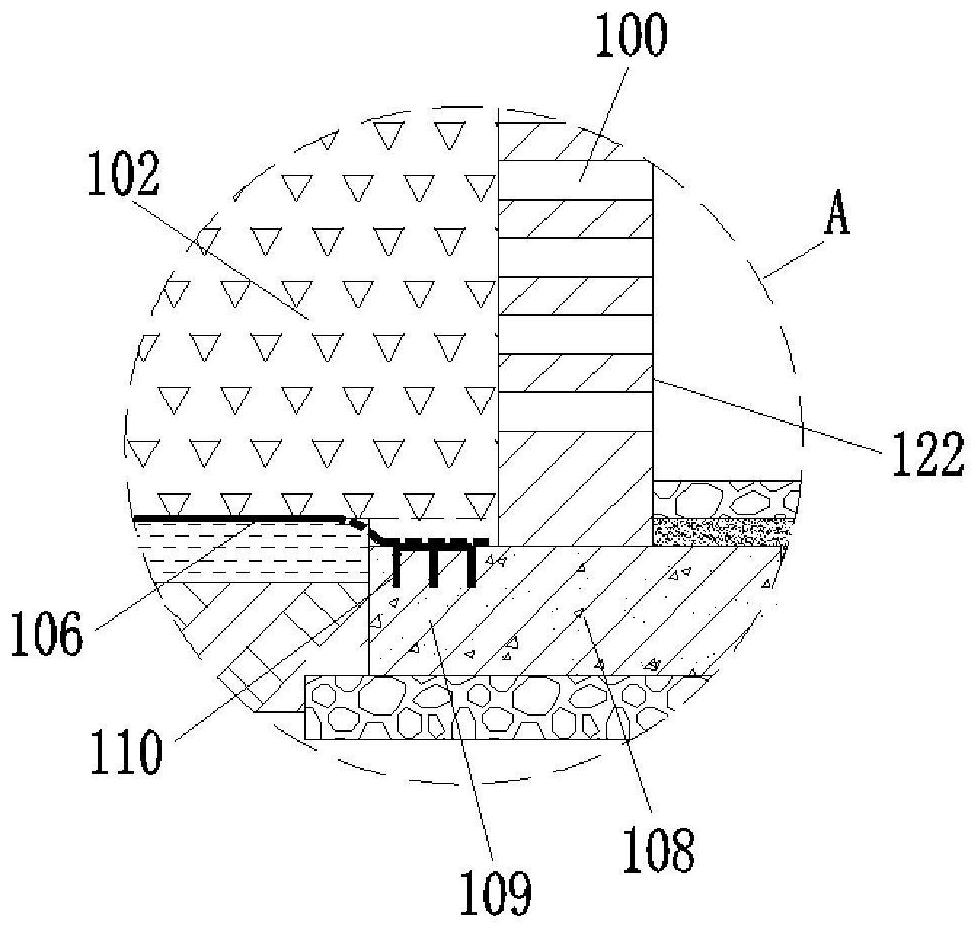Subsurface coupled wetland for nitrogen and phosphorus removal
A technology for denitrification, phosphorus removal and wetlands, applied in the field of water treatment, can solve problems such as affecting the treatment effect, affecting the water flow path, and blocking the substrate, and achieves the effect of high pollutant removal capacity, alleviation of blockage, and improvement of service life.
- Summary
- Abstract
- Description
- Claims
- Application Information
AI Technical Summary
Problems solved by technology
Method used
Image
Examples
Embodiment 1
[0040] Such as Figure 1-5As shown, this embodiment discloses a subsurface-surface coupled wetland for denitrification and phosphorus removal, including an inlet channel 11 , a wetland main body 12 , an outlet channel 13 and a water level adjustment pool 14 arranged in sequence along the water inlet direction. The wetland main body 12 includes an inlet water distribution flower wall 121, an outlet water distribution flower wall 122, and a filling area between the inlet water distribution flower wall 121 and the outlet water distribution flower wall 122, and the filling area is filled with phosphorus removal filter material. The water inlet distribution flower wall 121 is arranged at the junction of the water inlet channel 11 and the wetland body 12 , and the outlet water distribution flower wall 122 is arranged at the junction of the wetland body 12 and the outlet channel 13 . The water inlet distribution wall 121 and the outlet water distribution wall 122 are respectively fix...
Embodiment 2
[0048] Such as Image 6 As shown, this embodiment discloses a subsurface-surface coupled wetland for denitrification and phosphorus removal. The difference between this embodiment and Embodiment 1 is only that the front end of the release type filter area 101 and the front end of the filter type filter area 102 The rear ends are respectively provided with pebble filling areas 114 . The rest of the structure of this embodiment is the same as that of Embodiment 1. In this embodiment, by setting the pebble filling area 114 and using it together with the water distribution flower wall, the effect of uniform water distribution can be better realized, and the rest of the effects of this embodiment are the same as those of Embodiment 1.
PUM
 Login to View More
Login to View More Abstract
Description
Claims
Application Information
 Login to View More
Login to View More - R&D
- Intellectual Property
- Life Sciences
- Materials
- Tech Scout
- Unparalleled Data Quality
- Higher Quality Content
- 60% Fewer Hallucinations
Browse by: Latest US Patents, China's latest patents, Technical Efficacy Thesaurus, Application Domain, Technology Topic, Popular Technical Reports.
© 2025 PatSnap. All rights reserved.Legal|Privacy policy|Modern Slavery Act Transparency Statement|Sitemap|About US| Contact US: help@patsnap.com



